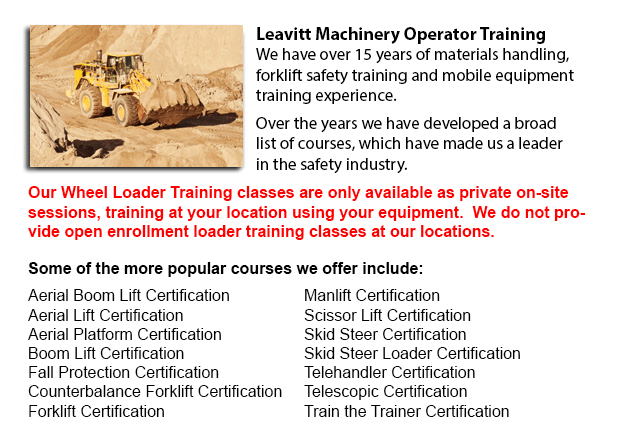
Forklifts are accessible in a wide range of load capacities and several models. The majority of lift trucks in a typical warehouse situation have load capacities between one to five tons. Bigger scale units are utilized for heavier loads, such as loading shipping containers, can have up to 50 tons lift capacity.
The operator can use a control in order to raise and lower the forks, that can also be referred to as "blades or tines". The operator of the lift truck could tilt the mast to be able to compensate for a heavy loads propensity to tilt the forks downward. Tilt provides an ability to function on uneven surface too. There are yearly competitions for skilled lift truck operators to contend in timed challenges as well as obstacle courses at regional forklift rodeo events.
General use
Forklifts are safety rated for loads at a particular maximum weight and a specific forward center of gravity. This vital information is supplied by the manufacturer and located on a nameplate. It is vital loads do not go over these specifications. It is against the law in lots of jurisdictions to tamper with or remove the nameplate without getting permission from the lift truck manufacturer.
Nearly all lift trucks have rear-wheel steering to be able to enhance maneuverability. This is very helpful within confined areas and tight cornering spaces. This type of steering differs fairly a bit from a driver's initial experience together with other motor vehicles. Since there is no caster action while steering, it is no needed to apply steering force so as to maintain a continuous rate of turn.
Unsteadiness is one more unique characteristic of forklift use. A constantly varying centre of gravity takes place with each and every movement of the load amid the forklift and the load and they need to be considered a unit during operation. A lift truck with a raised load has gravitational and centrifugal forces which could converge to lead to a disastrous tipping mishap. To be able to avoid this from happening, a forklift should never negotiate a turn at speed with its load raised.
Forklifts are carefully designed with a cargo limit meant for the blades. This limit is decreased with undercutting of the load, that means the load does not butt against the fork "L," and also decreases with fork elevation. Generally, a loading plate to consult for loading reference is placed on the forklift. It is unsafe to utilize a lift truck as a personnel lift without first fitting it with certain safety equipment such as a "cage" or "cherry picker."
Lift truck use in distribution centers and warehouses
Vital for every distribution center or warehouse, the lift truck should have a safe environment in which to accommodate their safe and efficient movement. With Drive-In/Drive-Thru Racking, a lift truck should go inside a storage bay that is many pallet positions deep to set down or get a pallet. Operators are often guided into the bay through rails on the floor and the pallet is placed on cantilevered arms or rails. These confined manoeuvres require skilled operators to complete the job safely and efficiently. Because every pallet needs the truck to enter the storage structure, damage done here is more common than with different kinds of storage. When designing a drive-in system, considering the dimensions of the fork truck, as well as overall width and mast width, must be well thought out so as to be certain all aspects of an effective and safe storage facility.
-
Order Picker License Oakville
Order Picker License Oakville - Order preparation operation or order picking as it is more normally known is a method used within warehouse operations and consists of employees called order pickers. The order picker's task is to collect and take arti... More -
Forklift Operator Certification Oakville
Forklift Operator Certification Oakville - Forklift operator certification is normally needed for personnel working within industrial, warehouse or construction setting to guarantee the safe utilization of forklifts. Workplace training need to follow... More -
Scissor Lift Certification Oakville
Scissor Lift Certification Oakville - A lot of worksites and tradespeople like iron workers, welders and masons utilize scissor lift platforms to help them reach elevated work areas. The utilization of a scissor lift is usually secondary to their tra... More -
Forklift Training Courses Oakville
Forklift Training Courses Oakville - When forklift operator safety training is customized for illiteracy, training time is reduced by 50%. Train the trainer, forklift training certification and lift-truck operator driver safety training evaluation pr... More -
Manlift Training Oakville
Manlift Training Oakville - There are numerous manlift training programs which offer a review of the manlift machinery. The practicum portion of the training is one more vital portion of the course. In this section the trainee has chance to demonstra... More -
Boom Lift License Oakville
Boom Lift License Oakville - To operate an aerial boom lift, operators should be licensed through training that can be obtained utilizing both classroom sessions and practical training and by attaining a boom lift license. Instruction should be given... More -
Crane / Overhead Crane / Self-Erect Crane / Truck Mounted Crane / Hydraulic Cranes Training in Oakville
Bridge cranes or likewise called overhead cranes are actually a type of industrial material handling crane using a line and hook mechanism that runs on a horizontal beam running along two widely separated rails. Several overhead cranes could be seen... More -
Telehandler Training in Oakville
Telescopic handlers normally called telehandlers for short, are an extremely popular piece of heavy construction machinery. They are widely utilized in the construction and agricultural trades. These machines have maximum reaching ability and could g... More

Forklift Training Oakville
TOLL FREE: 1-888-254-6157
Oakville, Ontario
forklifttrainingoakville.com
Email Us
About Us


